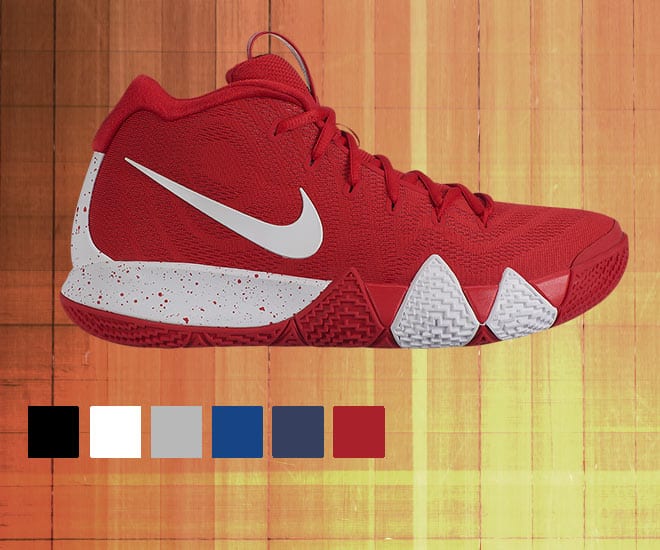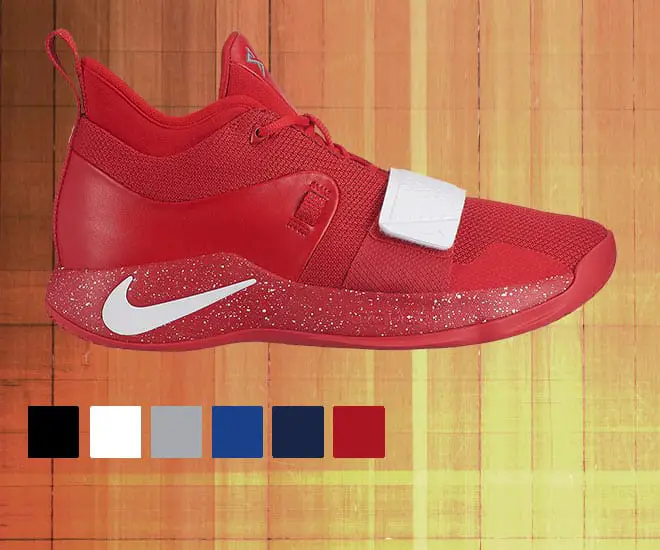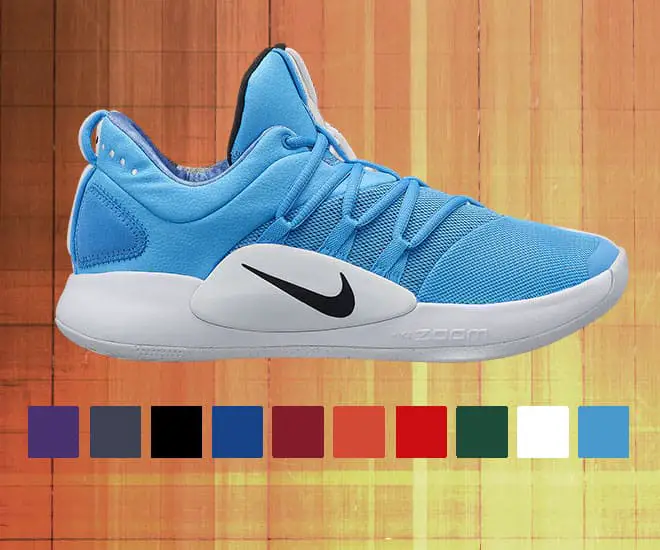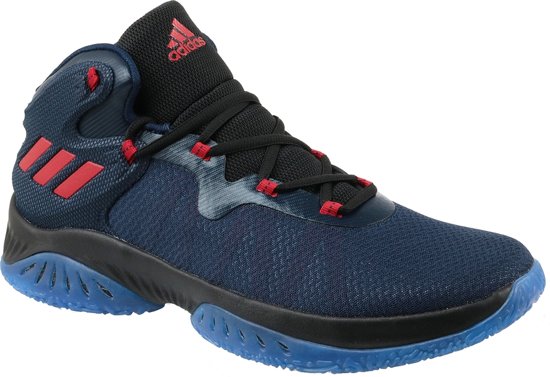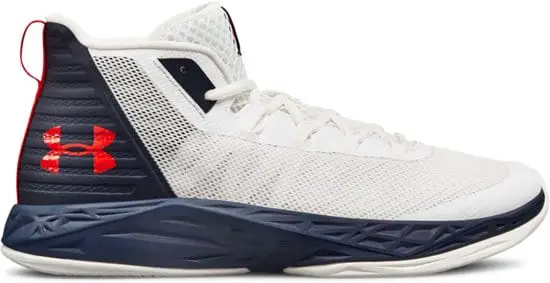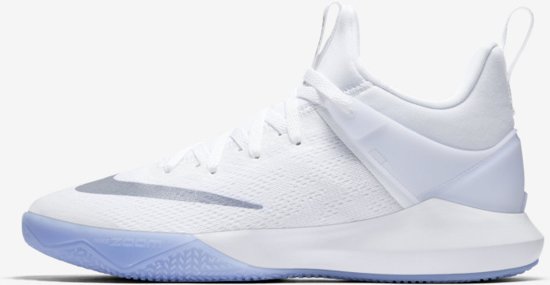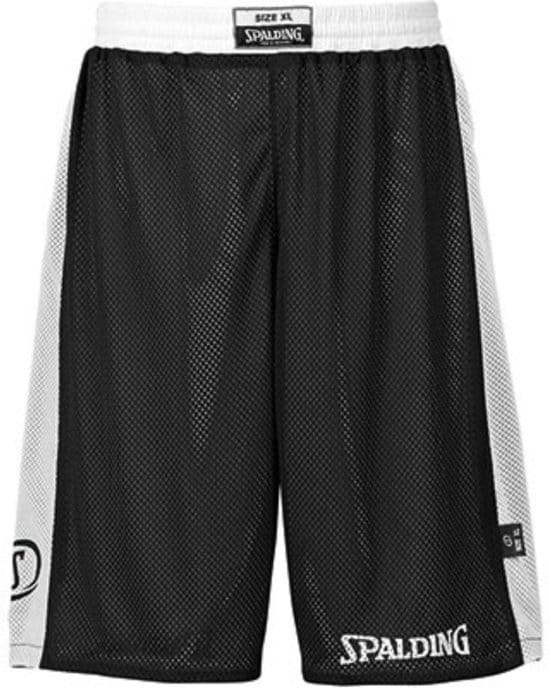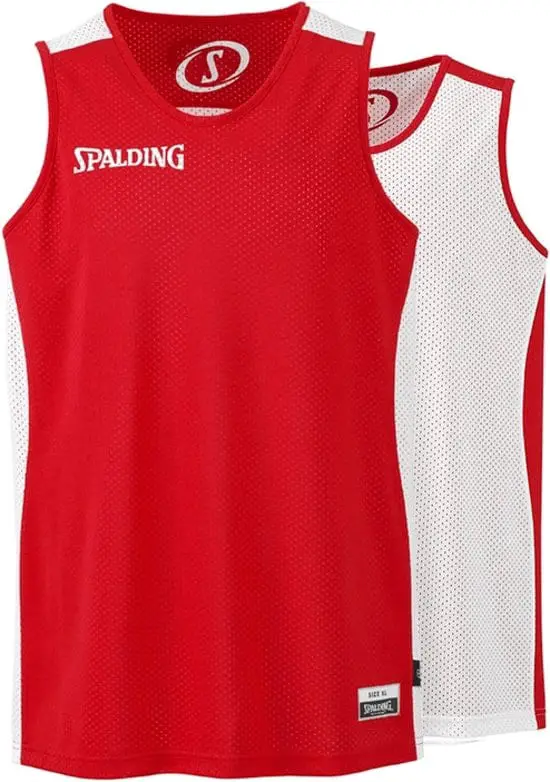I enjoy writing these articles for my readers, you guys. I don't accept payment for writing reviews, my opinion on products is my own, but if you find my recommendations helpful and you end up buying something through one of the links I may be able to receive a commission on that. More information
If you're going to play basketball, you naturally want to look perfect. Basketball is one of the sports where culture and the right kind of style are perhaps most important.
In this post I first show you some perfect pieces of clothing and, we wouldn't be referees.eu if we didn't also include a piece about the rules and the role of the referee within the beautiful sport.
What we discuss in this comprehensive post:
What clothes do you need for basketball?
basketball shoes
This is what makes everyone crazy about basketball shoes, in other words: basketball shoes. Here I have some of the best models for you so that you don't slip during the competition and you get the best jump shot.
Whether you're a referee like us who also has to run a lot, or a player who wants to get the most out of their game, these basketball shoes will help you get the most out of yourself.
Finding the shoe that fits your game isn't always an easy task. The shoes on your feet play a part in any hard-earned attack or well-timed steal.
A faster first step, better ankle support, responsive traction – the right shoe can help with all of these. Whatever part of your game you want to upgrade, finding the shoe that's right for you can give you an edge this season.
These are the best basketball shoes for next season:
Nike Kyrie 4
Arguably one of the most explosive and creative guards in the NBA, Kyrie Irving needs a shoe that can respond to his flashy crossover and even a flashier first step. With a zig-zag pattern cutout of the shoe where the rubber meets the hardwood, you'll get full traction through even the quickest changes of direction.
A lightweight foam paired with Zoom Air cushioning in the heel makes the responsive court feel like savvy guards should be play-makers. The fourth iteration of Kyrie's line is a weapon every elusive guard needs in their arsenal this season.
Nike PG (Paul George)
The Nike PG Paul George returns to its roots with a second debut of the midfoot strap. It hasn't been seen since the PG 1, and it doesn't add much to the shoe in terms of weight, so it still plays like a lighter profile basketball shoe.
However, the strap gives you the power to customize your own fit so you're ready to take on someone like Paul George, and the innovative outsole prevents you from wiping your soles on every dead ball, allowing you to zone into zones. can stay on what's important.
Nike Hyperdunk X Low
The Nike Hyperdunk has officially reached the decade mark as a must-have in Nike's basketball shoe lineup. The shoe started breaking down walls in 2008 with the flawless Flywire design and it's back in better shape for the upcoming season.
Extraordinary feel and grip on the court comes from the wavy outsole patterns that grip the hardwood with authority. The iconic line retains its unused Zoom Air cushioning and complements it with a lightweight upper to help you log tough minutes.
Adidas Explosive Bounce
The Explosive Bounce features a high-cut silhouette with a slim, lightweight design that excels in versatility and overall support. The shoe is equipped with ultra-strong TPU through the sole to help make toe-ins and take-offs more in control, but explosive.
If you're playing above the rim, the bounce midsole landing pad of a game is a serious plus.
Under Armor Jet Mid
Under Armor didn't waste much time after the release of Curry 5 to get started on the next basketball shoe. The Jet Mid features a large side wrap for 360 degree grip when pressing screens, cutting into the hoop or sliding in time for charging.
The midsole brings you the explosive energy return by adding dual-density Micro G foam and Charged Cushioning.
Nike Zoom Shift
Gear up this season with the seriously grippy outsole on the Nike Zoom Shift. Nike drops in the same Zoom Air cushioning found in many of their performance line shoes.
At its core, the shoe remains lightweight with its textile upper, a huge complement to the highly traction-enveloping outsole for aggressive blow-bys. The Zoom Shift 2 is a serious deal for well under $100, and it's ready to keep up with even the most elite players on the field.
basketball clothes
I always have the best feeling with basketball clothes from Spalding. It is a good brand, is firmly put together and above all it absorbs moisture well, because you will undoubtedly sweat in a match.
Of course you can't play the sport if you don't have a basket. Therefore read our tips for buying the best basketball backboard.
Basketball: Referee Signals
There are many different signals that basketball umpires use in the game. It can get confusing.
This is a list of the different basketball referee hand signals and what they mean.
Violations signals

Walking or traveling
(don't bounce the ball while walking)
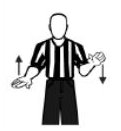
Illegal or double dribble
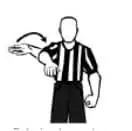
Carry or palm the ball
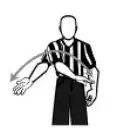
Over and Over (Half Court Violation)
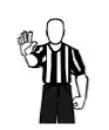
Five second violation
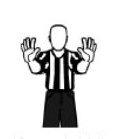
Ten seconds (more than 10 seconds to get the ball halfway)
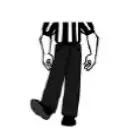
Kicking (deliberately kicking the ball)
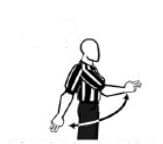
Three seconds (attacking player stands in line or key for more than 3 seconds)
Referee Basketball Foul Signals

hand check

Holding

Blocking
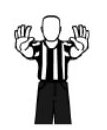
Violation for pushing

Charging or player control error
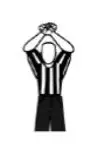
Intentional error

Technical foul or “T” (generally for misconduct or unsportsmanlike conduct)
Other Referee Signals
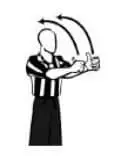
jump ball
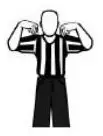
30 seconds timeout
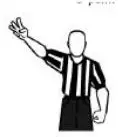
Three point attempt
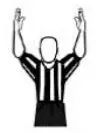
three point score

No score
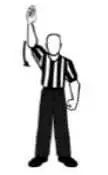
Start the clock
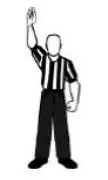
Stop the clock
Note about basketball referees
Keep in mind that the umpires are there to improve the game. Without officials, the game wouldn't be fun at all.
They WILL make mistakes. Basketball is a difficult game to referee. That's just how it is.
Getting angry, yelling at the referee and throwing a ball won't do you any good and won't help you or your team. Just keep playing and listen to the umpires regardless of whether you agree with the decision or not.
Continue to the next play. They do their very best and try to make the game enjoyable for everyone.
The Rules of Basketball
Fortunately, the rules of basketball are fairly straightforward. However, for the younger players, some rules can be easily forgotten.
The three-second rule stating how long an attacking player can be in the key before being knocked out is a good example.
Once you've taught your team the rules of the game, there's an easy way to make sure they don't forget them. Let them tell you the rules.
Spend a few minutes during each exercise questioning them. Make it fun. In addition, while practicing, you can learn and reinforce the rules of the game.
Before you can teach the rules to your team, you need to know them yourself…
Basketball is a team sport. Two teams of five players each attempt to score by firing a ball through a hoop raised 10 feet above the ground.
The game is played on a rectangular floor called the court, and there is a hoop at each end. The court is divided into two main sections by the center framing line.
If the attacking team brings the ball into play behind the mid-court line, it has ten seconds to get the ball over the center line.
If not, the defense gets the ball. Once the attacking team has gotten the ball over the mid-court-line, they can no longer control the ball in the area behind the line.
If so, the defense is awarded the ball.
The ball is moved through the lane to the basket by passing or dribbling. The team with the ball is called the violation.
The team without the ball is called the defense. They try to steal the ball, knock over match shots, steal and pass, and grab rebounds.
When a team makes a basket, they score two points and the ball goes to the other team.
If a basket or field goal is made outside the three-point arc, that basket is worth three points. A free throw is worth one point.
Free throws are awarded to a team according to a number of divisions where the number of fouls involved in a half and/or the type of offense committed.
Fouling a shooter always results in two or three free throws being awarded to the shooter, depending on where he was when he shot.
If he was past the three-point line, he gets three shots. Other types of fouls do not result in free throws being awarded until a certain number has accumulated during the half.
Once that number is reached, the fouled player gets a "1-and-1" chance. If he makes his first free throw, he may make a second attempt.
If he misses the first try, the ball is live on the rebound.
Each game is divided into sections. All levels have two halves. In college, each half is twenty minutes long. In high school and below, the halves are divided into eight (and sometimes six) minute quarters.
In the pros, quarters are twelve minutes long. There is a gap of several minutes between the halves. Gaps between quarters are relatively short.
If the score is tied at the end of regulation, overtime of varying lengths is played until a winner appears.
Each team is assigned a basket or goal to defend. This means that the other basket is their scoring basket. At halftime, the teams switch goals.
The game starts with one player from both teams in the midfield. An umpire tosses the ball up between the two. The player who gets hold of the ball passes it to a teammate.
This is called a tip. Besides stealing an opponent's ball, there are other ways for a team to get the ball.
One way is if the other team commits a foul or violation.
Violations
Personal fouls: Personal fouls include any type of illegal physical contact.
- To beat
- Charging
- slap
- Holding
- Illegal pick/screen – when an attacking player is in motion. When an attacking player extends a limb and makes physical contact with a defender in an attempt to block the defender's path.
- Personal Fouls: If a player is shooting while there is a foul, he will be awarded two free throws if his shot does not come in, but only one free throw if his shot goes in.
Three free throws are awarded if the player makes a mistake on a three-point goal and they miss the ball.
If a player makes a mistake in making a three-point shot and still makes it, he is awarded a free throw.
This allowed him to score four points in a play.
Inbounds. If fouled while shooting, the ball is given to the team on which the violation was committed.
They get the ball to the nearest side or baseline, out of bounds, and have 5 seconds to get the ball on the court.
One one. If the fouling team has committed seven or more fouls in play, the fouled player is awarded a free throw.
When he makes his first shot, he is awarded another free throw.
Ten or more mistakes. If the offending team has committed ten or more fouls, the fouled player is awarded two free throws.
Charging. An offensive foul committed when a player pushes or runs over a defensive player. The ball is given to the team on which the foul was committed.
Block it. Blocking is illegal personal contact as a result of a defender failing to establish his position in time to prevent an opponent from driving to the basket.
Blatant mistake. Violent contact with an opponent. This includes hitting, kicking and punching. This type of foul results in free throws and offensive possession of the ball after the free throws.
Intentional error. When a player makes physical contact with another player without reasonable effort to steal the ball. It is a question of judgment for the officials.
Technical error. Technical error. A player or a coach can commit these kinds of mistakes. It's not about player contact or the ball, but is instead about the "manners" of the game.
Bad language, obscenity, obscene gestures and even arguing can be considered a technical foul, as can technical details about filling out the scorebook incorrectly or dunking during warm-ups.
Hiking/Travelling. Traveling is more than 'taking a step and a half' without dribbling. Moving your pivot foot when you've stopped dribbling is travel.
Carrying / palming. When a player dribbles the ball with his hand too far to the side of or, sometimes, even under the ball.
Double Dribble. Dropping the ball onto the ball with both hands at the same time or picking up the dribble and then dribbling again is a double dribble.
Hero ball. Occasionally, two or more opponents will gain possession of the ball at the same time. To avoid a prolonged and/or violent struggle, the umpire stops the action and awards the ball to one team or the other on a rotating basis.
Goal trending. If a defensive player interferes with a shot while it is en route to the basket, en route to the basket after touching the backboard, or while it is in the cylinder above the rim, it is goaltending and the shot counts. If committed by an attacking player, it is a violation and the ball is awarded to the opposing team for a throw-in.
Backcourt violation. Once the offense has brought the ball over the halfway line, they cannot cross the line while in possession. If so, the ball is awarded to the opposing team to relay incoming messages.
Time limitations. A player entering the ball has five seconds to pass the ball. If he does not, the ball is awarded to the opposing team. Other time restrictions include the rule that a player cannot have the ball for more than five seconds when under close guard and, in some states and levels, shot clock restrictions that require a team to attempt a shot within a specified time frame.
Basketball Player Positions
Centre. Centers are generally your tallest players. They are usually placed near the basket.
Offensive – The goal of the center is to be open to a pass and to shoot. They are also responsible for blocking defenders, known as picking or screening, to open up other players for driving to the basket for a goal. Centers are expected to get some offensive rebounds and setbacks.
Defensive – In defense, the center's main responsibility is to hold back opponents by blocking shots and passes in the main area. They are also expected to get a lot of rebounds because they are bigger.
forward. Your next highest-ranking players will most likely be your attacker. While a forward player may be called up to play under the hoop, they may also be required to work in the wings and corner areas.
Forwards are responsible for getting a pass, getting out of range, hitting targets and rebounding.
Defensive – Responsibilities include preventing drifting toward goal and rebounding.
guard. These are potentially your shortest players and they should be really good at fast dribbling, seeing the field and passing. Their job is to drag the ball onto the field and start offensive actions.
Dribbling, passing and setting up offensive actions are the main responsibilities of a guard. They must also be able to drive to the basket and shoot from the perimeter.
Defensive – In defense, a guard is responsible for stealing passes, fighting shots, preventing trips to the hoop, and boxing.
Where should new players, umpires and coaches start?
First, we suggest that you focus on learning the basics of basketball.
Like any sport, regardless of your age – whether you're a professional athlete or a youth player just starting out – you need strong foundations to be successful!
Unfortunately, most people don't really understand what that means.
The basics include working on the little things that make you better – no matter what team or coach you play for – or what offense or defense you do.
For example, working on the basics of shooting will help you get better no matter what team you play for. The basics of shooting include proper foot alignment, leg bend, hand position, arm angle, run through and so on. These are some of the little things that make a difference. Teach them!
The same goes for bays, footwork, post play, passing, jab steps, jump stops, pivoting, blocking out, and so on.
We recommend that you start by learning the proper technique and fundamentals for:
- the shooting
- Passing
- dribble
- Layups
- jump shots
- Turning and footwork
- Defense
- rebounding
These are all crucial fundamentals that you need to master as they make you and your team better no matter what age level or situation you find yourself in.
Another American sport: read about the best baseball bats

